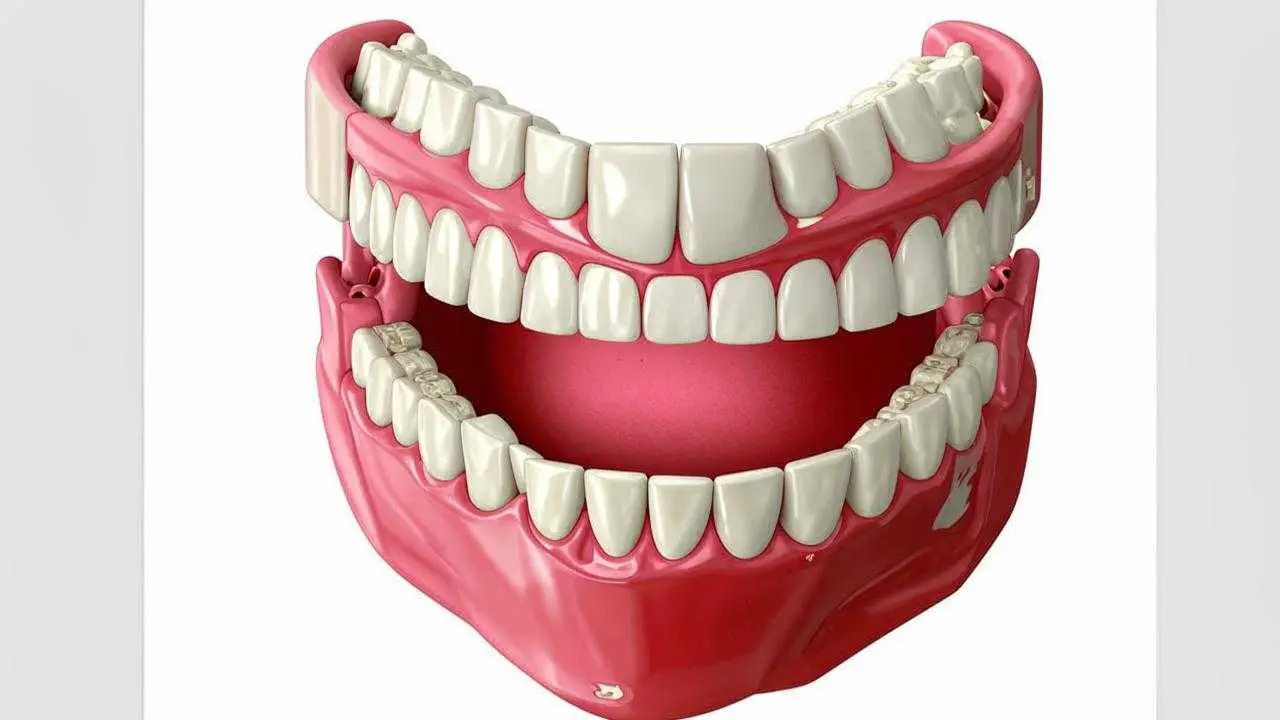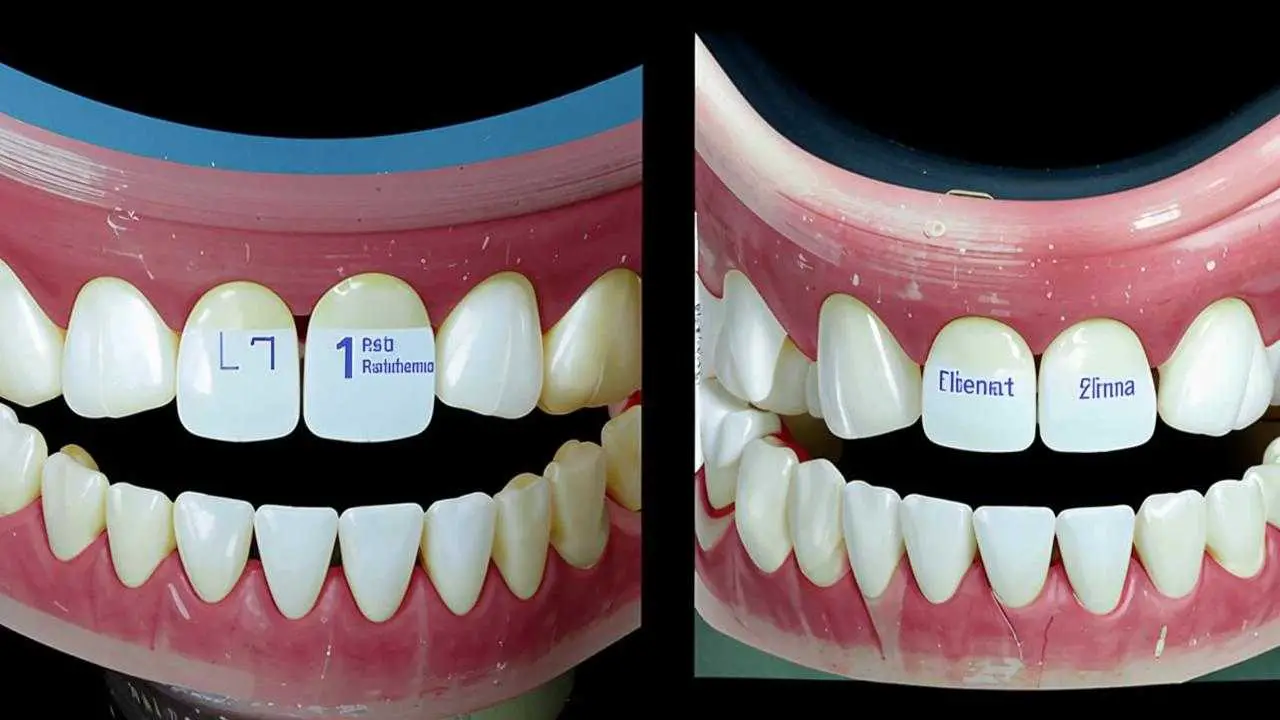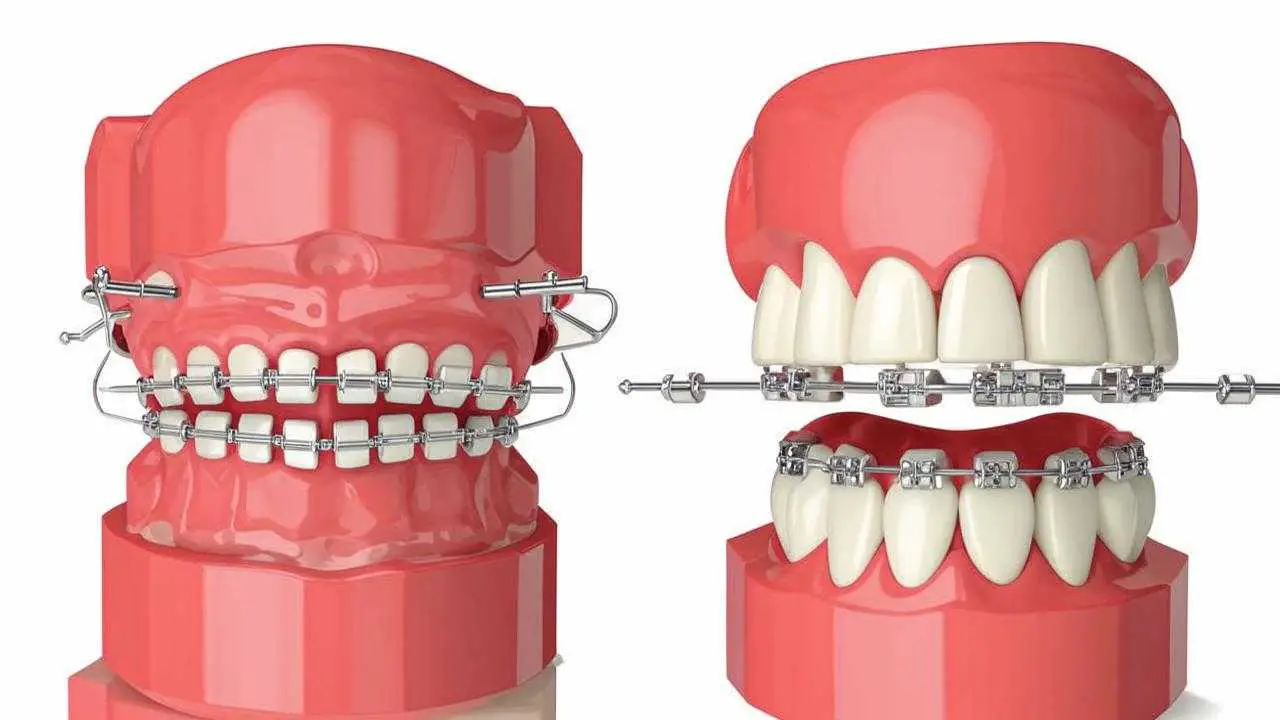Gigitan mesial adalah kelainan penutupan rahang, ketika rahang bawah lebih menonjol ke depan dan tumpang tindih dengan gigi seri atas. Hal ini membawa pasien tidak hanya masalah yang bersifat psikologis, tidak ada estetika yang tepat, kemungkinan diskusi tentang cacat dari luar, tetapi juga mempengaruhi kesehatan secara umum. Dan perawatan gigitan mesial pada orang dewasa, anak itu panjang dan sulit. Ada pekerjaan dari semua sisi: senam myofunctional, pijat proses alveolar, penggunaan konstruksi ortodontik dan kunjungan berkala ke spesialis gigi.
Apa yang dimaksud dengan gigitan mesial
Gigitan mesial (medial) adalah kelainan oklusal di mana rahang tidak saling menutup dengan benar. Posisi maju dari barisan gigi bawah ke barisan gigi atas terlihat jelas bahkan secara visual.
Mesial tooth displacement is sometimes combined with other types of anomalies – open, crossbite.
Tanda-tanda
Prognathia of the jaw, as also called mesial bite, is expressed by the following signs:
- upper incisors are overlapped by one-third over the lower antagonists;
- a prominent forward “willful chin”; the expression appears angry;
- ⅓ of the lower face is visually more massive;
- the lower lip is thickened;
- the profile is concave, “month-like”;
- the change of baby teeth begins with the lower teeth and occurs early enough;
- asymmetry of the temporomandibular joint due to mesial occlusion;
- clicking of the jaw, sounds when yawning, chewing.
In addition to external, facial signs, intraoral symptoms can be manifested not only by reverse overlap of the incisors, but also by a straight bite. The teeth of the lower jaw are directed toward the oral cavity, it is possible to have trems and diastemas, gaps. Chronic periodontal disease is often diagnosed.
Accompanied by mesial jaw pathology is a speech defect. The patient complains of difficulties in biting food, GI problems.
Causes of occurrence
The etiology of the causes of mesial bite is different. They can be congenital, acquired, genetic:
- heredity, peculiarity of the structure of the skull, facial skeleton in a generation;
- abnormalities in intrauterine development, when a pregnant woman took strong drugs or suffered a severe disease;
- short frenulum;
- underdeveloped jaw (upper jaw) or intermandibular bone;
- bad habits (finger sucking, upper lip sucking, for example);
- early eruption of the lower milk teeth (however, any abnormalities in eruption may be the cause of mesial occlusion);
- osteomyelitis and other bone diseases;
- macroglossia (large tongue);
- early extraction of baby teeth;
- rickets;
- overcomplete teeth.
In recent years, the detection rate of mesial occlusion has been increasing; scientists see the problem in genetic predisposition.
Influence on the bite anomaly can incorrect position during sleep (head lowered on the chest), the habit of holding a fist, hands under the chin (sitting).
Classification
In dentistry, the classification of mesial bite is quite expanded and supplemented over the last century. Even in the not-so-distant 2004, Persin L.S. proposed his own system of 9 classes, based on the experience of previous years.
- lower macrognathia ( hyperdevelopment of the jaw);
- lower prognathia (jaw significantly protrudes forward);
- upper micrognathia (underdevelopment of the jaw);
- upper retrognathia (displacement of the jaw deep into the skull);
- upper micrognathia and lower macrognathia;
- upper retrognathia and lower prognathia;
- upper micrognathia and lower pronation;
- upper retrognathia and lower macrognathia;
- habitual advancement of the mandible.
Mesial occlusion is distinguished by prognathia, which can be:
- true;
- false.
True – pronounced facial asymmetry, severe speech defect. It manifests itself already at an early age. This is macrognathia of the lower jaw and/or its pronation. Correction of the mesial bite is required from the age of 5-7 years, while in the form of therapy.
False – the lower jaw is of normal size, but the upper jaw is underdeveloped and/or deepened into the skull. Not always this type of progenia of the jaw can be noticed at a glance. But X-rays and CT scans give a clear understanding of the pathology.
Classification of the degree of curvature:
- The first degree – visually unnoticeable anomalies, the size of the gap between the teeth is up to 2 mm, the lower incisors are slightly prominent.
- Thesecond degree – there is a “willful chin”, the gap increases to 10 mm, the canines of the lower jaw are constantly touching the mucosa of the upper lip.
- The third degree – the lower jaw is pronouncedly filed forward and it is clearly visible that it is larger than the upper one, the gap is more than 10 mm between the teeth, the incisors do not touch each other. Other anomalies may be present – crowding of teeth is one of them.
The third degree of curvature is dangerous because almost always such mesial displacement of teeth passes into an open bite. And correcting the mesial bite with braces may not work.
Another one of the types of misalignment division by shape:
- dentoalveolar – the lower jaw can fall into place on its own, shifted backward with the normal interlocking of the lateral teeth;
- gnathic – in this case, spontaneous displacement is impossible;
- mixed.
We have not described all types, in the medical literature there are very many classifications, as well as clinical cases.
Diagnosis
Diagnosis begins with a visual examination by a doctor, and it should be an orthodontist. To determine the degree of mesial bite will need the following examinations and actions:
- assessment of facial anomaly, asymmetry;
- measuring the proportions of the jaw with measuring instruments;
- X-rays, teleradiography, orthopantomography;
- computer tomography;
- on articulators, clarify the inclination of the incisors to the temporal region;
- use bite rollers;
- taking casts of the jaw.
When palpating the TMJ (temporomandibular joint), the patient may feel pain, discomfort. To determine further treatment: how to correct the mesial bite without surgery or its not to avoid is necessary full information about the current state. And all innovative diagnostic methods are used.
Features, methods, stages of treatment
The choice of correction method is influenced by the age of the patient and the degree of pathology.
Correction of mesial bite in children
The best period for correcting any bite anomaly is childhood. Everything starts with massage of the alveolar processes, then:
Myogymnastics – for the very young, up to 5-6 years old. Special mouth exercises will allow the jaws to grow harmoniously. For older children, myotherapy is prescribed in addition to the main treatment.
Trainers for patients 5-8 years old help to correct the bite. For 4-8 months, they are worn at night. Represents a silicone two-jaw mouth guard. Acts on the muscles of the jaw.
Plate. From 8 years of age, an orthodontic plate is suggested. Plastic base with metal arches correcting mesial occlusion. There are many types, modifications: Frenkel’s activator, Brückl’s apparatus, Andresen-Goiple activator and others. The choice of whether it will be a classic plate, with springs or other depends on the degree of pathology.
Orthodontic cap. The child will have to be in it for 6-8 hours. It looks like a corsage with elastic bandages making tension, tension on the back of the head and chin.
Bracket systems. You can correct a mesial bite with braces from the age of 12. The design is non-removable. The impact of the metal arc with brackets on the teeth and jaw is constant. Worn for about a year.
Braces with and without ligatures to correct the bite
Treatment of mesial bite in an adult
For adults, treatment starts with braces or inexpensive orthodontic plates. But they will have to wear them twice as long as children. Since it is not always possible to correct the mesial bite without surgery, implantation and prosthetics may be necessary.
In severe pathology it is necessary to resort to surgical intervention. There are 2 types:
- sparing. For effective correction it is necessary to remove teeth.
- traumatic. This is an operation directly on the jaw. Its excision and forced fixation of the correct position with a construction of titanium plates and screws. Stitches and plaster splints are applied, which must be worn for 2 weeks. To fix the result, either braces or retainers are used.
Consequences
If you do not correct the mesial bite, you can expect unpleasant consequences:
- recurrent migraines;
- clicking of the jaw when yawning and talking;
- pain when opening the mouth wide;
- facial muscle cramping;
- digestive problems;
- speech defects become more severe;
- loss of aesthetics, appearance, face changes not for the better.
On the dental side:
- Increased erosion of enamel (even on baby teeth);
- interdental caries;
- bruxism;
- open bite.
The neglected state of teeth and bone tissue due to mesial bite directly affects the impossibility or difficulties in implantation. This pathology should not be neglected and should be corrected as early as possible
Prognosis and timing
90% of mesial occlusion cases can be corrected with correction. It is better to start with baby teeth or a replacement bite. Children’s bones are growing, and the probability of putting everything in its place in 1-2 years is extremely high. Correction of the mesial bite with braces guarantees a positive result. This can be seen in the before and after photos.
In adult patients, it may be necessary to consult several doctors: dental therapist, orthodontist, orthopedist. Treatment will not be quick – 1.5-4 years. And only compliance with the doctor’s recommendations will help not only to achieve the result, but also to consolidate it.
Pencegahan
Nothing better is invented for prophylaxis of all dental diseases as visiting a dentist twice a year. This is the price of health. At the appointment, the doctor can trace deviations, mesial displacement of the tooth and timely refer to the orthodontist.
Much attention should be paid to the period of pregnancy. The intrauterine development of the child, the formation of bones, including maxillofacial bones, is affected by the health of the mother, her diet, medications, stress.
Children, of course, are watched by parents. It is necessary to adhere to simple rules:
- from an early age it is necessary to wean the child from bad habits – sucking a finger for a long time, keep in the mouth something out of habit;
- prioritize breastfeeding;
- use anatomical nipples;
- monitor the appearance of the first teeth and their replacement by permanent teeth;
- watch the posture of the schoolchild, if the body is incorrectly positioned, the lower jaw protrudes forward.
For older children:
- chew food with the same load on the teeth;
- watch out for the eruption of the “eights”;
- eat a balanced diet and take care of your health.
It is realistic to have an open smile and beautiful teeth after treatment of mesial bite. There are many dentists in Moscow who solve these problems. You can find the best one in terms of cost and good reviews.
[1] Persin L.S. Types of dentoalveolar anomalies and their classification. – Moscow: MGMSU Publishing House, 2006. – 25 с.



